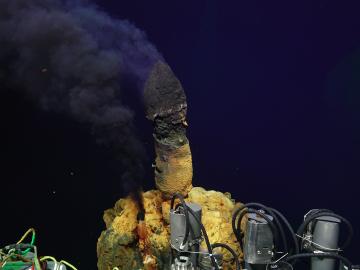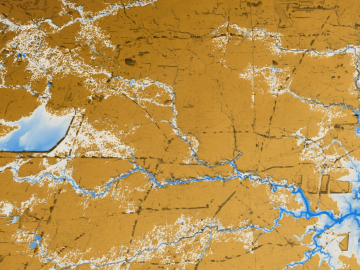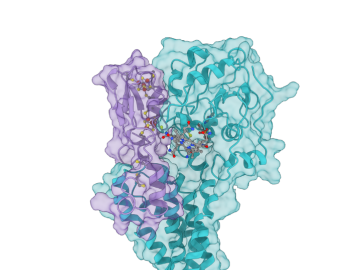
Filter News
Area of Research
- (-) Energy Science (72)
- (-) Isotopes (26)
- Biological Systems (1)
- Biology and Environment (112)
- Biology and Soft Matter (1)
- Computational Biology (2)
- Computational Engineering (2)
- Computer Science (4)
- Electricity and Smart Grid (1)
- Functional Materials for Energy (1)
- Fusion and Fission (3)
- Materials (45)
- Materials for Computing (6)
- Mathematics (1)
- National Security (10)
- Neutron Science (29)
- Nuclear Science and Technology (6)
- Quantum information Science (9)
- Supercomputing (72)
News Topics
- (-) Biomedical (12)
- (-) Clean Water (8)
- (-) Environment (55)
- (-) Isotopes (26)
- (-) Quantum Science (2)
- 3-D Printing/Advanced Manufacturing (79)
- Advanced Reactors (6)
- Artificial Intelligence (8)
- Big Data (5)
- Bioenergy (26)
- Biology (11)
- Biotechnology (4)
- Buildings (38)
- Chemical Sciences (14)
- Composites (17)
- Computer Science (26)
- Coronavirus (12)
- Critical Materials (9)
- Cybersecurity (8)
- Energy Storage (72)
- Exascale Computing (2)
- Fossil Energy (2)
- Frontier (2)
- Fusion (1)
- Grid (39)
- High-Performance Computing (6)
- Hydropower (3)
- Irradiation (1)
- Machine Learning (7)
- Materials (39)
- Materials Science (28)
- Mathematics (2)
- Mercury (3)
- Microelectronics (1)
- Microscopy (8)
- Molten Salt (1)
- Nanotechnology (8)
- National Security (6)
- Neutron Science (11)
- Nuclear Energy (10)
- Partnerships (12)
- Physics (1)
- Polymers (11)
- Security (7)
- Simulation (4)
- Space Exploration (7)
- Statistics (1)
- Summit (4)
- Transportation (66)
Media Contacts

Oak Ridge National Laboratory contributed to an international study that found almost 300 novel types of microbes living near a deep sea volcano. These microbes, which could be used in biotechnology, reveal new insights about their extreme underwater environment.

A new tool from Oak Ridge National Laboratory can help planners, emergency responders and scientists visualize how flood waters will spread for any scenario and terrain.

Brian Damiano, head of the Centrifuge Engineering and Fabrication Section, has been elected fellow of the American Society of Mechanical Engineers.

Six scientists at the Department of Energy’s Oak Ridge National Laboratory were named Battelle Distinguished Inventors, in recognition of obtaining 14 or more patents during their careers at the lab.

Porter Bailey started and will end his 33-year career at ORNL in the same building: 7920 of the Radiochemical Engineering Development Center.

East Tennessee occupies a special place in nuclear history. In 1943, the world’s first continuously operating reactor began operating on land that would become ORNL.

Seven ORNL scientists have been named among the 2020 Highly Cited Researchers list, according to Clarivate, a data analytics firm that specializes in scientific and academic research.

When Sandra Davern looks to the future, she sees individualized isotopes sent into the body with a specific target: cancer cells.

Four research teams from the Department of Energy’s Oak Ridge National Laboratory and their technologies have received 2020 R&D 100 Awards.

A team led by ORNL created a computational model of the proteins responsible for the transformation of mercury to toxic methylmercury, marking a step forward in understanding how the reaction occurs and how mercury cycles through the environment.


